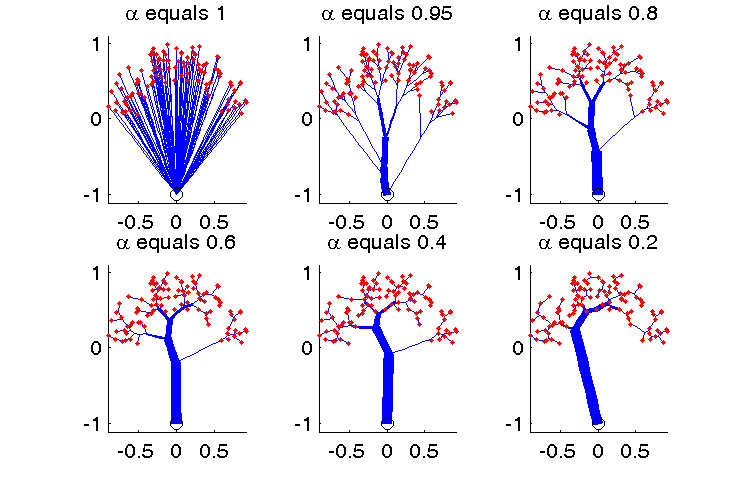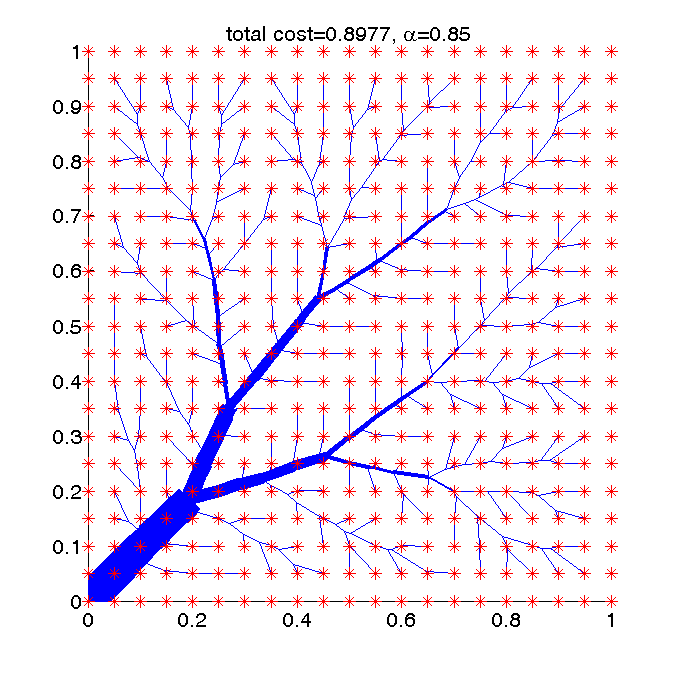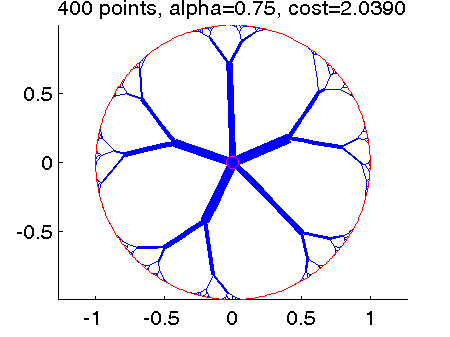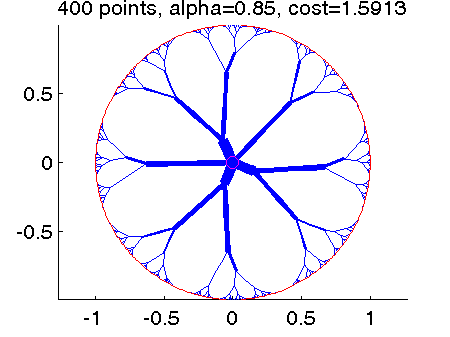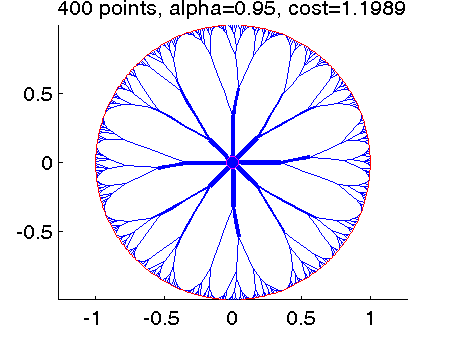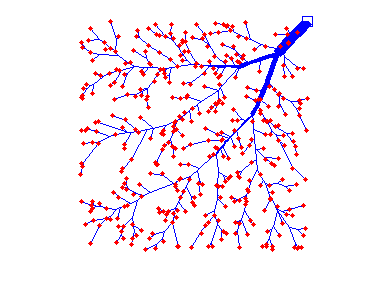|
|
My
Publications in this field
- Setting-up the theory
- Optimal paths related to transport problems. Communications in Contemporary Mathematics. Vol. 5, No. 2 (2003) 251-279.
- Interior regularity of optimal transport paths. Calculus of Variations and Partial Differential Equations. Vol. 20, No. 3 (2004) 283-299.
- Boundary regularity of optimal transport paths. Preprint
- Extension of the theory to metric spaces
- Ramified optimal transportation in geodesic metric spaces. arXiv:0907.5596. Accepted by Advances in Calculus of Variations. (2010)
- Numerical simulations
- Numerical simulation of optimal transport paths. arXiv:0807.3723. the Second International Conference on Computer Modeling and Simulation (ICCMS 2010). Vol 1, (2010) pp521-525. DOI: 10.1109/ICCMS.2010.30 .
- in Theoretical Mathematics
- Quasimetric spaces
- The geodesic problem in quasimetric spaces Journal of Geometric Analysis: Volume 19, Issue2 (2009), Page 452-479.
- Dimension of Measures
- On the transport dimension of measures. (With Anna Vershynina). SIAM J. MATH. ANAL. Vol. 41, No. 6,(2010) pp. 2407-2430.
- Fractal Geometry
- Diffusion-limited aggregation driven by optimal transportation. (With Douglas Unger). Fractals. Vol. 18, No.2 (2010) 1-7.
- in Applied Mathematics
- Tree Leaves
- The formation of a tree leaf. ESAIM Control Optim. Calc. Var. 13 (2007), no. 2, 359--377.
- Urban Transport Networks
- An application of optimal transport paths to urban transport networks. Discrete and Continuous Dynmical Systems, Supp. Volume, 2005, 904-910.
- Economy
- The exchange value embedded in a transport system. (With Shaofeng Xu) arXiv:1001.5232. To appear in Applied Mathematics and Optimization (2010).
- Placental
- Optimal transport and placental function. Joint with C. Salafia and S. Morgan. In Preparation.
- Predictions of birth weights using placental information (draft version)
- My talk on "introduction to optimal transport paths". For readers not familar with the subject, here is the formal definition of transport paths as well as a family of transport cost M_{alpha} defined on them.
- Answers from pure math.
- An optimal transport path between two probability measure is a geodesic in the metric space of probabilty measures ([7, theorem 5.1] and [2, section 4]), where the metric on the space of probabilty measures is the intrinsic metric induced by a nearmetric defined on the space of transport plans ([2, section 4]). Here, a nearmetric space is a generalized metric space in which the distance satisfies a relaxed triangle inequality d(x,y)<=c(d(x,z)+d(y,z)) for some constant c no less than 1. See [2] for details.
- An optimal transport path between two probability measure is a solution to the Plateau's problem: Given a "boundary curve C" ( which is the difference of two probability measures here), find a surface S (which is a rectifiable 1-current here) with boundary C of the least "surface area" ( which is the M_{alpha} cost here). So, an optimal transport path can be viewed as a special kind of one dimensional "minimal surface".
- Answers from applied math.
- An optimal transport path is an efficient transport system for transporting given sources to given targets.
- Motivations from applied math.
- Describe a general phenomena that it is more cost efficient to transport items in a group than transport them individually.
- Understand the language of the nature: why many living and nonliving systems prefer to adopt "branched" transport systems? What is the role of "optimization" played in the formation of many fractal typed systems in nature?
- Motivations from pure math.
- A geodesic between two points in the plane is a segment. Is there a geodesic from two points to three points? Or, given two probabilty measures, what is a geodesics (if any) between them?
- Soap films motivates the study of minimal surfaces. What may the other "optimal" objects (e.g. trees, leaves, etc) in nature lead to? Why do they prefer "branching structures"?
- We know that a metric on a metric space may induce an intrinsic metric. The triangle inequality is assumed to play an important role there. When a distance does not satisfy the triangle inequality (or only satisfies a relaxed triangle inequality), will it still be able to induce an intrinsic metric? If so, what does the intrinsic metric look like?
- Example: Given 100 random (red) points and a parameter \alpha in [0,1], an optimal transport path from these points to the origin looks like:
- Example 2: An optimal transport path from uniform distributed points to the origin.
- Example 3: An optimal transport path from a unit circle to its center with different parameter alpha
- Transport flow
- Optimal fractals
The study of optimal transport paths is motivated by many questions. For instance:
